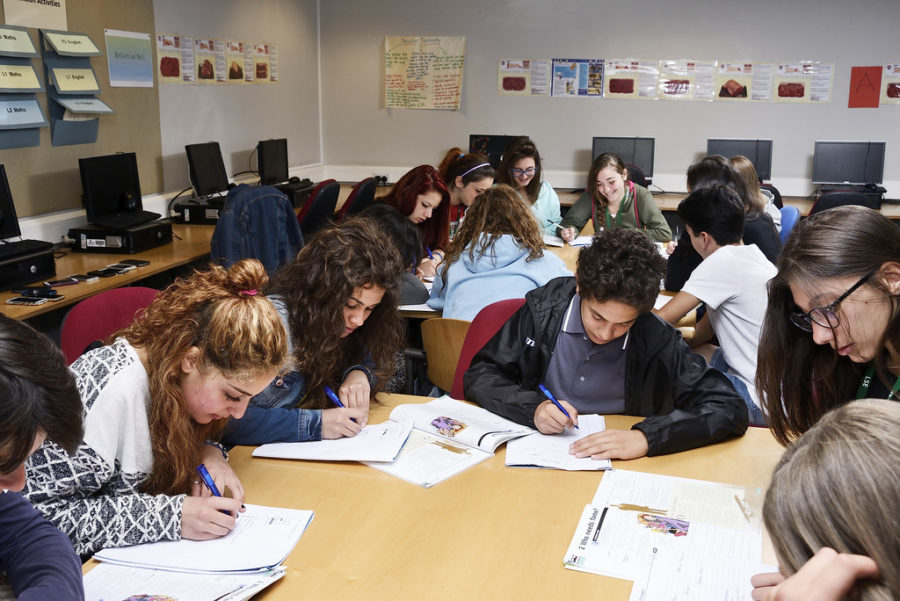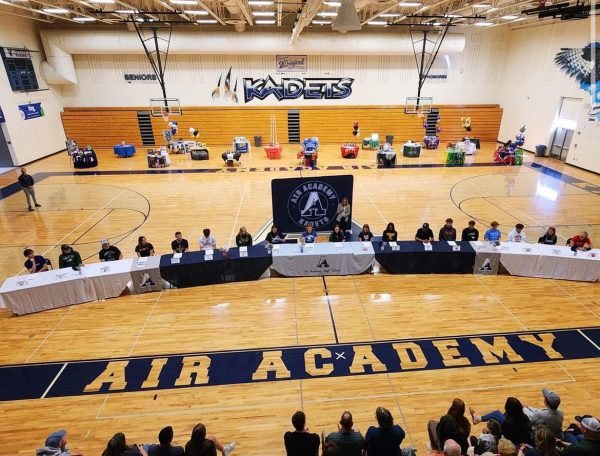The Effect of Class Size on Education
School is designed to be a place where students can get a good education in a safe and nurturing environment, but what happens when their classes are overfilled?
What happens when there are more students than desks?
What happens when some people have to sit on the floor for some of their classes?
AP classes are already challenging college-level classes, but imagine taking one with 40 other students.
These issues all have to be managed by the administrators so they can create the best place for students to learn.
Class size can affect how people learn and behave in a class. Administration sets many limits on how big or small a class can be so that it can operate functionally and create a great learning environment for the students.
According to dean Julie Attias and assistant principal Sean Whitson, the minimum class size is fifteen, so that students can still have engaging discussions and work together. There are a few exceptions to that rule though. For new AP classes, smaller groups are created so that kids can have the opportunity to take a higher level class.
Whitson said, “We try to nurture new AP classes because in a classes’ first year not too many students will take the class, but after a couple of years we hope that the class grows.”
There are also caps on how many students can be in a class for safety and educational reasons. That number is usually around 30-35 students, depending on the subject of the class. Attias used to be an AP teacher herself and she had very large classes where not everyone was able to learn at the level that they deserved.
“I had an AP class that had 44 students and there were not desks or chairs for all of them, so some had to sit on the floor. They all wanted to be there and learn, but it was hard with 43 other students in the classroom,” said Attias.
One of the smallest classes at Air Academy is the AP Spanish class with new teacher Beth Carlson. There are only six students in the class, making the learning environment much different from most. Though she enjoys her class, her ideal class size is around 20 students.
In that class, due to the number of students, they operate more like a small group of people working together, as opposed to a normal class setting where there is a lot of individual work. Also, in that class, each student receives a lot more attention than they would in a class with 30 students.
Carlson said, “In a class of that size, the students really get to know each other because you are talking to the same six people every day. Also, everyone has to participate because there is nowhere to hide.”
Though it is very different compared to most other classes, the marching band has a whopping 180 students. Such a large group requires more than one teacher to manage. These teachers are Joseph Musick and Vanessa Lyttle. Though managing a group that large can be difficult, Musick said that he would take as many as 300 kids if he could. In this class, a lot of the order is based on discipline and student leadership.
“In marching band, we have very clear expectations and procedures. We also have a hierarchy of students to help lead the band,” said Musick.
Even with his desire for such a large marching band, he does feel that for students in regular classroom settings, there can only be so many students before the levels of achievement begin to decline.
No matter the size though, each classroom has a different way that they operate so that teachers can maintain order, discipline, and the learning environment.

Hey, I am Declan and I am a senior this year at Air Academy! This is my second year working for the Jetstream Journal and my first year editing. At school,...













